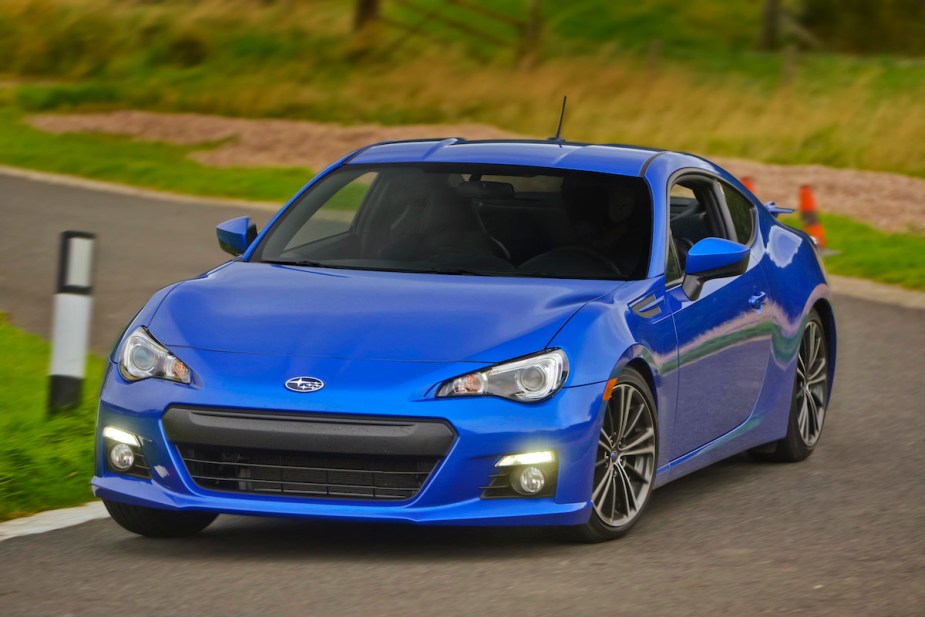What Do the Letters BRZ Stand for in the Subaru BRZ?
The production of the Subaru BRZ has been a long-standing project between Subaru and Toyota. First released in 2012, the Subaru BRZ is a two-door coupe specifically designed to provide an affordable yet refined sports car experience. And while Subaru fans might have their own interpretations of what BRZ stands for, the truth is that it has a few different meanings.
History of the Subaru BRZ
According to News Wheel, Subaru is well-known for its sporty compact cars infused with Subaru’s signature all-wheel drive technology. But it wasn’t the case when Subaru and Toyota teamed up to create the Subaru BRZ. Introduced in the North American market in 2012, the BRZ was Subaru’s first foray into rear-wheel drive and Subaru’s first coupe. In fact, it was one of the most affordable sports cars on the market at the time, and it still maintains a competitive price tag among compact sports cars.
Unlike its siblings, the Subaru WRX and Subaru STI, the Subaru BRZ was intended to be a more refined and performance-oriented sports car. Its identical triplets, Toyota 86 and Scion FR-S, compete in the same market segment as the Mazda MX-5 Miata. While the Scion FR-S was discontinued in 2016, Subaru and Toyota continue to produce the Subaru BRZ and Toyota 86 today.
What does Subaru BRZ stand for?

According to Car and Driver, Subaru BRZ stands for Boxer engine, Rear-wheel drive, Zenith, which was created in collaboration with Toyota. While Subaru’s Boxer engine is well known for its performance and efficiency, the BRZ’s rear-wheel drive was a major departure from Subaru’s traditional all-wheel drive configurations. The “Zenith” part of BRZ stands for the car reaching its highest potential or peak, which could be interpreted as “sky-high aspirations,” according to Subaru.
The current state of the Subaru BRZ
Since its release in 2012, the Subaru BRZ has continuously evolved and was recently redesigned for the 2022 model year. It will join forces with Toyota’s GR86 to deliver an even more powerful sports car experience. On top of that, Subaru also announced its new Generation 3 Boxer engine, which offers significantly improved performance and fuel economy. According to Subaru, the new BRZ will have two trim levels: Premium, with a starting MSRP of $28,595, and limited, with a starting MSRP of $31,095.
Under the hood, the new BRZ will be powered by a naturally aspirated 2.4-liter four-cylinder Boxer engine, connected to either a six-speed manual or an available six-speed automatic transmission. Compared to the previous 2.0-liter model, the new engine feels more responsive, thanks to its increased power output of 228 hp and torque of 184 lb-ft.
The Subaru BRZ might not be the quickest in town, with its limited trim requiring 5.4 seconds to hit 60 mph, almost a full second quicker than the previous model. The driving experience has been enhanced with improved handling, braking, and responsive steering. Every Subaru BRZ gets a limited-slip rear differential as standard, but 17-inch wheels for the Premium trim and 18-inch wheels for the Limited trim.
The automatic BRZ is the most fuel-efficient option in the lineup, earning an estimated 21 mpg in the city, 30 mpg on the highway, and 25 mpg combined. The Subaru BRZ features a 7-inch digital gauge cluster, STARLINK Multimedia with standard Apple CarPlay and Android Auto integration, keyless access with push-button start, and a Wireless Bluetooth pairing system.
To sum it up, the Subaru BRZ has proven to be a reliable and capable sports car since its introduction in 2012. It offers an attractive price tag, rear-wheel drive handling, and Boxer engine performance while delivering an engaging driving experience. Now with the recent redesign for the 2022 model year, we can expect even more power and efficiency from the new Edition 3 Boxer engine. So whether it’s for track days, street racing, or daily commuting, the Subaru BRZ is sure to please any sports car enthusiast.


